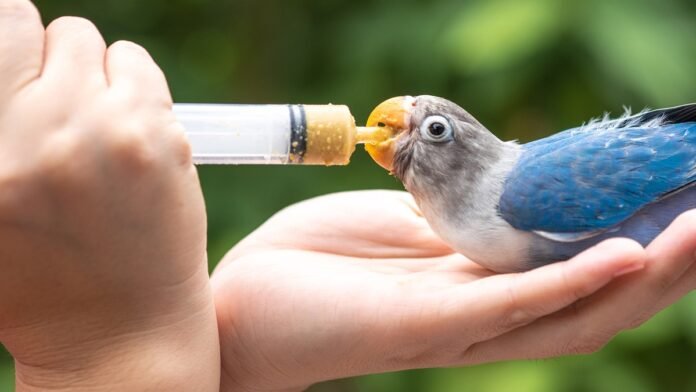When you feed wild birds, you make sure that food is available and easy for them to get when they move to a different area. By giving wild birds food, you’re also making sure they have enough to eat during the cold winter months.
This also lets the bird lover learn about the different kinds of birds that live in the area during each season. At different times of the year, you can see songbirds, hummingbirds, woodpeckers, finches, chickadees, cardinals, bluebirds, and other types of birds.
What is the Best Thing to Feed a Bird?
Wild birds can be fed a wide range of foods, such as nectar, mixes of seeds, nuts, insects, soft fruit, and suet made into cylinders, cakes, or butter. There are different ways to help with the stresses of nesting and winter. Some even have things in them that keep other animals and bugs from eating the feed.
Chemical fertilisers, pesticides, herbicides, and fungicides are not used on organic ingredients, so they are healthier and more nutritious. Mealworms, whether they are alive or dried, will add variety and are a good way to get protein. Also, fruits and nuts are a great way for birds to get more energy, and many of them will eat them.
Read More: Parrot Care Tips
The bird feeds appropriate for each season include:
- Spring: seed blends, sunflower seeds, sunflower chips, millet, fresh fruit, suet when dry weather permits, nectar, peanut butter, mealworms, crushed eggshells
- Summer: seed blends, sunflower seeds, sunflower chips, Nyjer seeds, millet, nectar, fruit, jelly, mealworms, peanuts, suet
- Fall: seed blends, sunflower seeds, Nyjer seeds, millet, nectar, nuts, fruit, suet, cracked corn
- Winter: seed blends, sunflower seeds, millet, Nyjer seeds, nuts, suet, cheese, fruit, peanut butter, cracked corn
Human foods like bread, cereal, and crackers don’t give wild birds the nutrients they need and may make them full too quickly, so they don’t get enough nutrients for good health. Because these foods don’t have enough protein and minerals, they can cause growth problems in young birds.
Bird Feeders
The best wild bird feeders are based on the type of food they offer and the types of birds that are likely to eat them. There are cylinder seed feeders with options for mesh, trays, and weather guards. Nectar feeders will be in the shape of a cylinder or a tray. Some are made so that bugs and squirrels won’t eat the food. Some styles can be attached to a window for a close-up view from the inside.
Bird feeders can be made from natural wood that has been painted with non-toxic paint, recycled plastic, wire mesh, and metal. Bird feeders should be cleaned every other week by scrubbing them with soap and warm water and then rinsing them well. They should be cleaned more often if it is raining or there are sick birds around.
How Often Should You Feed Birds?
Some wild birds might start to depend on this extra food source. Most of the time, the frequency will depend on demand and the time of year. At first, you should only feed them once a day, but during the winter, you may want to feed them twice a day.
If you feed wild birds, they will come to your neighbourhood any time of year. There are times when this extra source of food will help the birds even more. In the spring, birds are building nests and raise their young, which means they need more food. When resources are scarce, harsh winter conditions may make it harder for birds to stay alive.
If you can, you should put birdseed in feeders every day. Giving the birds fresh food first thing in the morning or right before sunset will give them regular chances to be watched.
Read More: 5 Health Tips for Your Pet




















